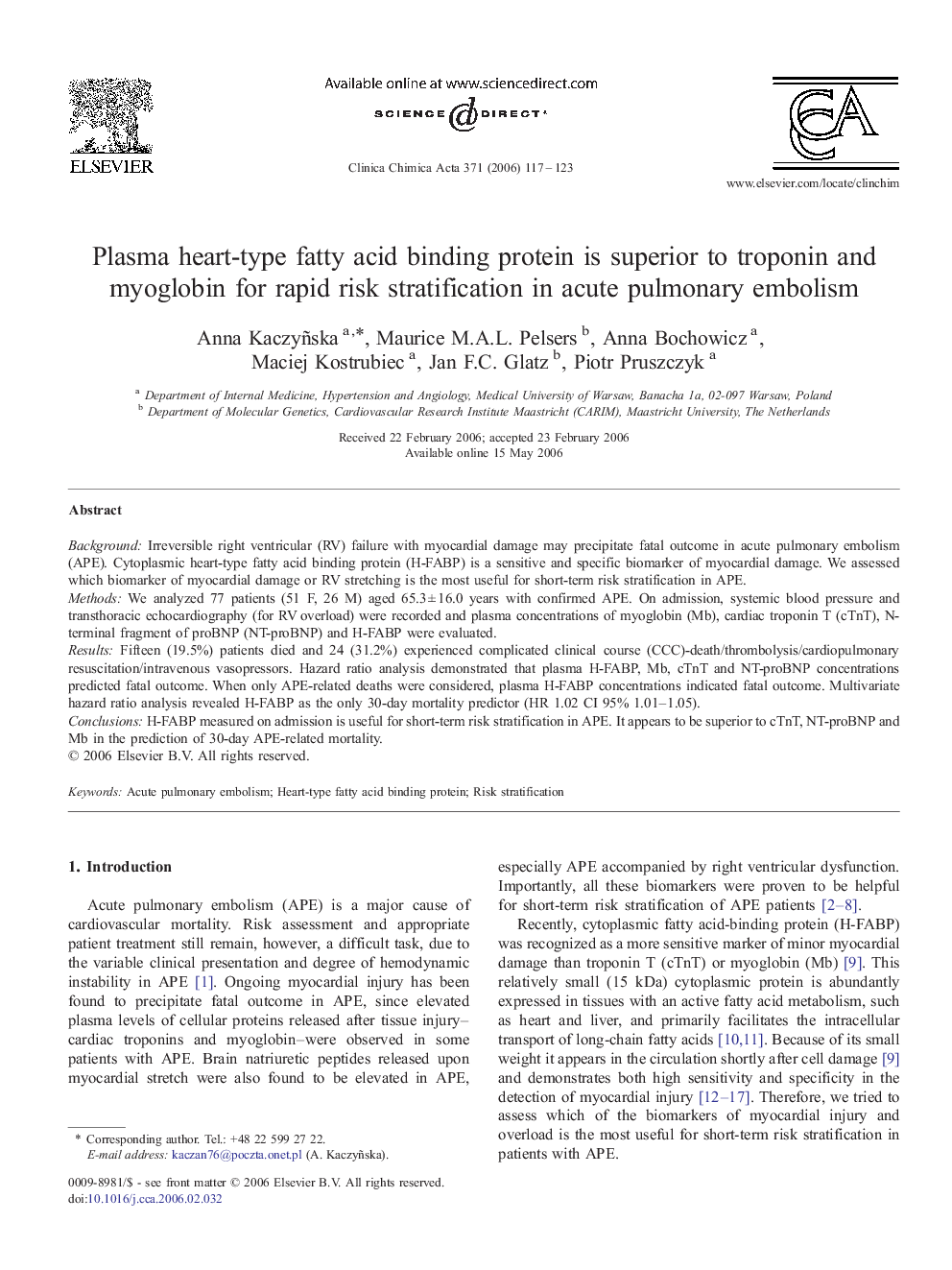| Article ID | Journal | Published Year | Pages | File Type |
|---|---|---|---|---|
| 1967821 | Clinica Chimica Acta | 2006 | 7 Pages |
BackgroundIrreversible right ventricular (RV) failure with myocardial damage may precipitate fatal outcome in acute pulmonary embolism (APE). Cytoplasmic heart-type fatty acid binding protein (H-FABP) is a sensitive and specific biomarker of myocardial damage. We assessed which biomarker of myocardial damage or RV stretching is the most useful for short-term risk stratification in APE.MethodsWe analyzed 77 patients (51 F, 26 M) aged 65.3 ± 16.0 years with confirmed APE. On admission, systemic blood pressure and transthoracic echocardiography (for RV overload) were recorded and plasma concentrations of myoglobin (Mb), cardiac troponin T (cTnT), N-terminal fragment of proBNP (NT-proBNP) and H-FABP were evaluated.ResultsFifteen (19.5%) patients died and 24 (31.2%) experienced complicated clinical course (CCC)-death/thrombolysis/cardiopulmonary resuscitation/intravenous vasopressors. Hazard ratio analysis demonstrated that plasma H-FABP, Mb, cTnT and NT-proBNP concentrations predicted fatal outcome. When only APE-related deaths were considered, plasma H-FABP concentrations indicated fatal outcome. Multivariate hazard ratio analysis revealed H-FABP as the only 30-day mortality predictor (HR 1.02 CI 95% 1.01–1.05).ConclusionsH-FABP measured on admission is useful for short-term risk stratification in APE. It appears to be superior to cTnT, NT-proBNP and Mb in the prediction of 30-day APE-related mortality.
